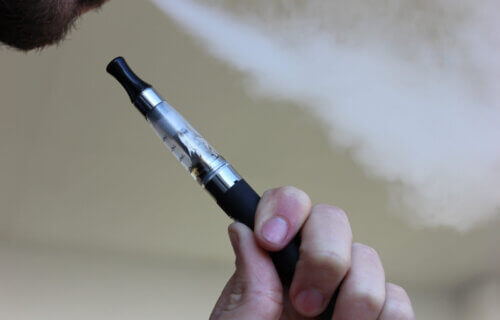ROCHESTER, N. Y. — As scientists continue their efforts to compare traditional cigarettes with e-cigarettes, which are credited by many former smokers as the key to smoking cessation, a recent study found harmful effects on white blood cells caused by flavors used with the modern smoking devices.
Over the past decade, traditional cigarette smoking has declined among Americans, partially thanks to the rapid rise in e-cigarette use.
Researchers from the University of Rochester Medical Center say that e-cigarette flavorings, which are still largely unregulated in the U.S., caused inflammation in monocytes, a type of white blood cell. Mixing flavors is particularly harmful, the study’s authors warn, more so than vaping just one flavor at a time. They also caution that certain flavors are more toxic than others.
Vaping the liquid in the e-cigarette exposes the lungs to the flavoring chemicals. Since these chemicals are tested as safe to ingest, they are assumed to be safer than smoking a traditional cigarette, but there isn’t much research on the effects of vaping on the lungs and the body.
The research team, led by first author Dr. Thivanka Muthumalage and senior author Dr. Irfan Rahman, wanted to test the assumption that vaping non-nicotine e-cigarette juice is healthier than smoking traditional cigarettes. Some research has indicated that vaping these juices causes stress and inflammatory responses in the lungs, but the researchers wanted to know how e-cigarettes, even without nicotine, affected the immune system.
For the study, they tested two types of monocytic cells from human tissue by exposing them to commonly used e-cigarette flavoring chemicals. In addition to indicators of inflammation and tissue damage, the research team also noticed evidence of significant cell death.
“Cinnamon, vanilla and butter flavoring chemicals were the most toxic but our research showed that mixing flavors of e-liquids caused by far the most toxicity to white blood cells,” notes Muthumalage in a statement.
The authors emphasize attention must be given by health official to the various flavors, which could be likened to ice cream or jelly bean types, and may draw in a vulnerable segment of potential e-cigarette users.
“Currently, these are not regulated, and alluring flavor names, such as candy, cake, cinnamon roll and mystery mix, attract young vapers,” adds Rahman. “Our scientific findings show that e-liquid flavors can, and should, be regulated and that e-juice bottles must have a descriptive listing of all ingredients. We urge regulatory agencies to act to protect public health.”
The full study was published Jan. 11, 2018 in the journal Frontiers in Physiology.
